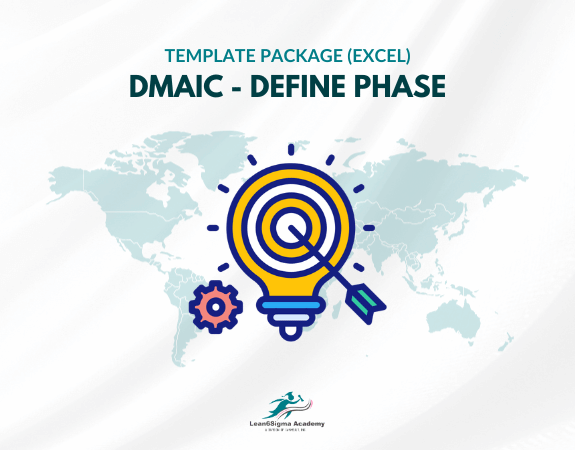DMAIC - DEFINE PHASE Templates package
Quick references
Project Team selection
Project charter
ALL the DEFINE PHASE Templates you need to be sucessful
Project kick-off
SIPOC
Stakeholder Analysis Plan
Here are some common components of a DMAIC Define Phase Templates package:
Project Charter Template: A Project Charter is a key document that defines the project's purpose, scope, objectives, and stakeholders. It also designates a project leader or team. The template provides a structured format for capturing this information.
Problem Statement Template: A Problem Statement is a clear and concise description of the issue or challenge that the project aims to address. The template guides the team in creating a well-defined problem statement.
Voice of the Customer (VOC) Template: VOC analysis helps identify and prioritize customer needs and expectations.
The template assists in gathering and documenting customer input.
Process Mapping Templates: Process maps, such as SIPOC (Suppliers, Inputs, Process, Outputs, Customers) diagrams, flowcharts, or swimlane diagrams, are used to visually represent the current process. Templates provide formats for documenting the process flow.
Stakeholder Analysis Template: Identifying and understanding stakeholders is crucial for project success.
The template helps list stakeholders, define their interests, and assess their influence on the project.
High-Level Process Metrics Template: Identifying key performance indicators (KPIs) and metrics that relate to the project helps set measurable objectives. The template guides the selection of relevant metrics.
Team Roles and Responsibilities Template: Clearly defining team roles and responsibilities helps ensure everyone knows their tasks and contributions. The template outlines team roles.
Data Collection Plan Template: For projects that involve data collection, a data collection plan helps specify what data will be collected, how, and when. The template guides the creation of a data collection plan.
Communication Plan Template: A communication plan outlines how project updates will be shared with stakeholders.
The template assists in developing a communication plan.
The DMAIC Define Phase Templates package helps project teams start their improvement projects with a clear understanding of the problem, objectives, and project scope. These templates provide structure and consistency in the initial phase of the DMAIC process, setting the stage for successful process improvement efforts.

0 Reviews
Riaan is a dynamic leader, coach, facilitator, Lean Six Sigma Master Black Belt with over 20 years of hands-on experience driving business results. Riaan is highly skilled and has worked across diverse industries internationally. With a degree in Chemical Engineering, Riaan started in the major breweries and bakeries in South Africa and was so dedicated to his work that he was often known to take his work home with him.
